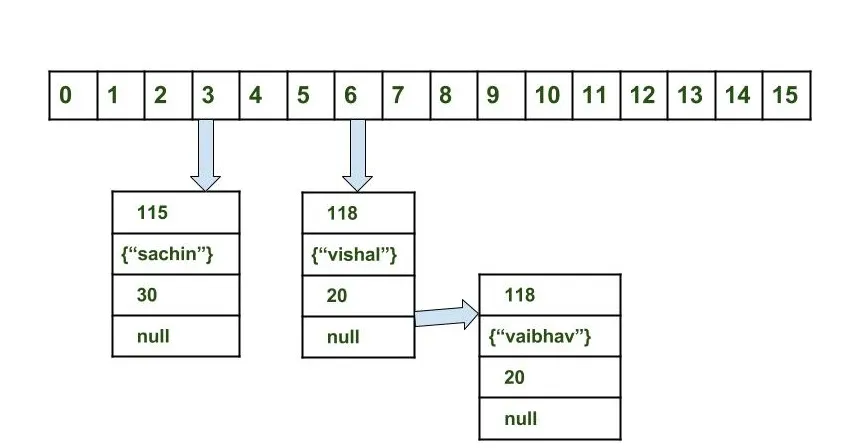HashMap
Reference doc:
-
https://www.geeksforgeeks.org/java-util-hashmap-in-java-with-examples/
-
https://docs.oracle.com/javase/6/docs/api/java/util/HashMap.html
-
HashMap in Java stores the data in (Key, Value) pairs
-
Similar to
HashTable, but it is unsynchornized -
Not threadsafe
-
Allows to store only one null key object, but can be more than one null values
-
HashMap has no guarantees as to the order of the map (TreeMap can have order)
Implementation
- https://www.geeksforgeeks.org/internal-working-of-hashmap-java/
- A collection of
Buckets - Buckets: A bucket is an element of the HashMap array. It is used to store nodes.
- Number of buckets (Initial capacity)
Buckets
- A bucket is an element of the HashMap array. It is used to store nodes.
- A Linked list to store nodes.
hashcode() and equals()
hashcode()- is used to calculate the index of bucket.
- important to calculate which bucket to store the entry. e.g. If
hashcode()is not implemented well and always picking the same bucket to store entry, the efficiency will be lower.
equals()- compare the
keyif they are equal or not.
- compare the
Collision
- When bucket index of two or more nodes are the same
- Nodes are joined by a link list (e.g. 1st node <- 2nd node <- 3rd node)
- When collision, the linked list is traversed
- until the key matches, or
- null is found on the next field.

Characteristics
- provides constant-time performance for the basic operations (get and put), assuming the hash function disperses the elements properly among the buckets.
- Iteration over collection views requires time proportional to the “capacity” of the HashMap instance (the number of buckets) plus its size (the number of key-value mappings). Thus, it’s very important not to set the initial capacity too high (or the load factor too low) if iteration performance is important.
Initial capacity and Load Factor
capacity = number of buckets * load factorInitial capacity
- number of buckets
Load factor
- how full the hash table is allowed to get before its capacity is automatically increased.
- When the number of entries in the hash table exceeds the product of the load factor and the current capacity,
- the hash table is rehashed (that is, internal data structures are rebuilt)
- so that the hash table has approximately twice the number of buckets.
- default load factor (.75) offers a good tradeoff between time and space costs
- Higher values of load factor:
- decrease the space overhead
- but increase the lookup cost (reflected in most of the operations of the HashMap class, including get and put)